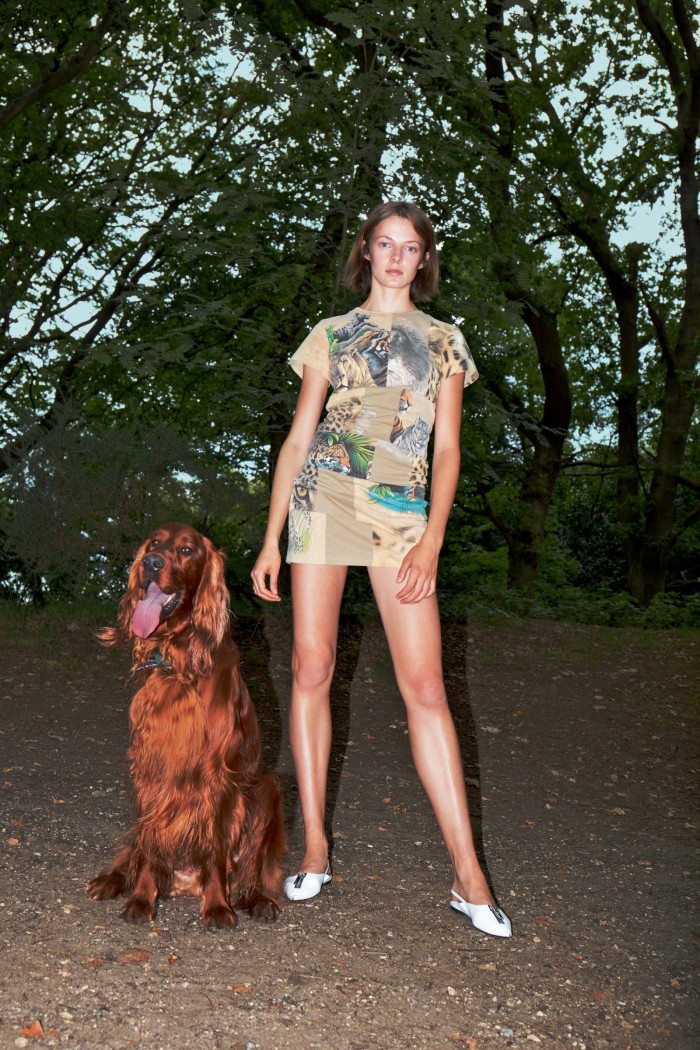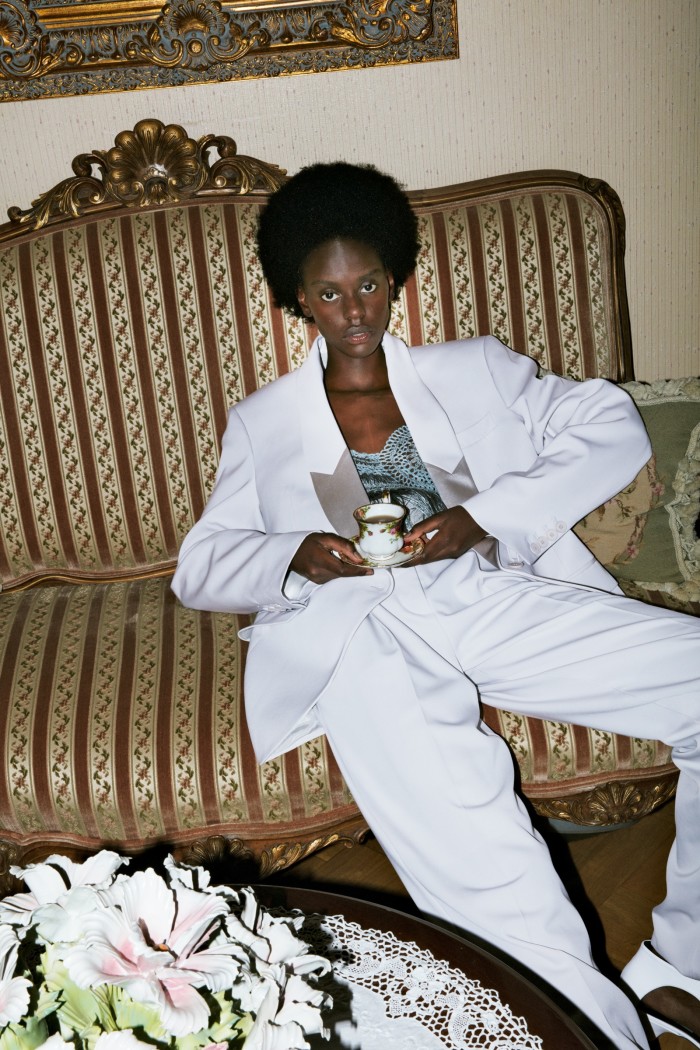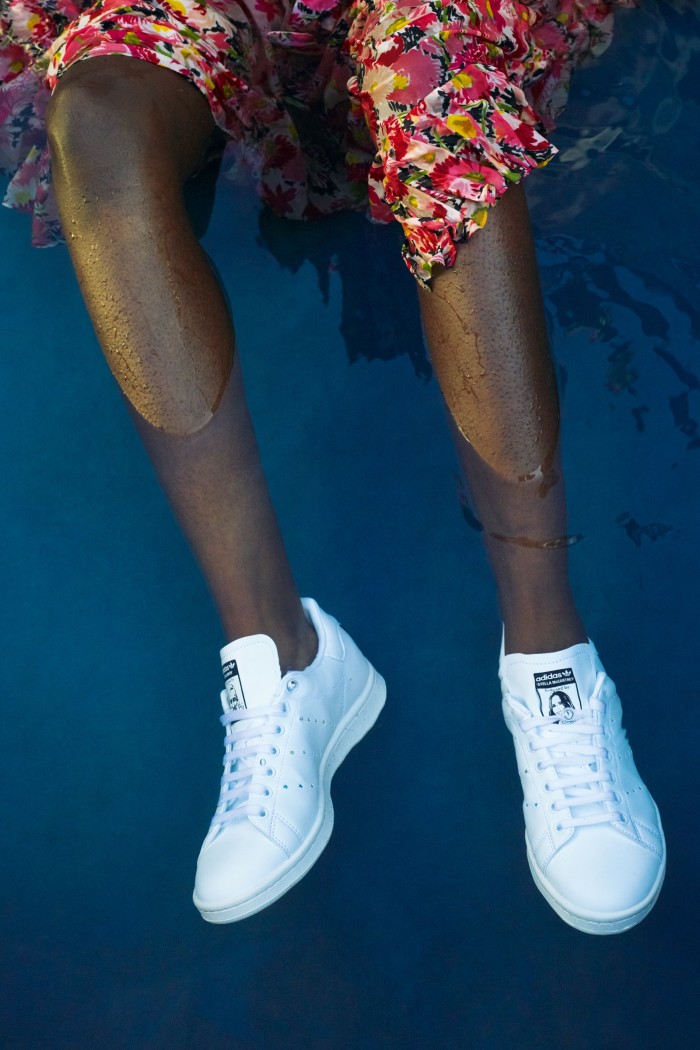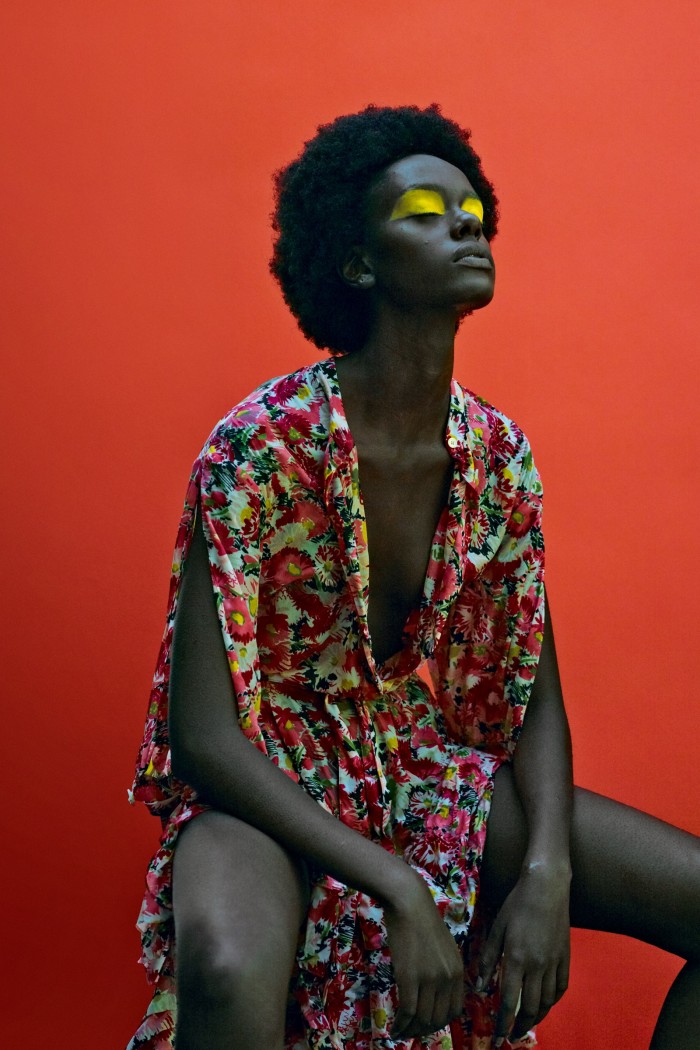S is for... sustainable, sexy, Stella McCartney

Simply sign up to the Fashion myFT Digest -- delivered directly to your inbox.
“It’s about regeneration,” says Stella McCartney of her new A-Z Manifesto – a 26-letter blueprint for sustainability and ongoing responsible production. It was born out of the extended period the designer spent locked down at home in Worcestershire, separated from her work team for the first time in decades. “I hadn’t been alone creatively since I was at Central Saint Martins,” says McCartney. “You’re not given the space to have a bigger-picture moment that often.” The designer is heading into the 20th anniversary of her business, and the pause allowed her time to consider the things that give her brand purpose.
She picked up a pen and paper. “A was for accountable, B for British – because my upbringing is British and my foundations at Savile Row and in tailoring are so British – C is for conscious…” she says. “It became a set of principles that we will now adhere to, a sort of value system for us. Fashion as an industry needs to have a purpose again.”
McCartney’s brand has found new momentum under LVMH, which bought a minority stake in the business in 2019 – barely 12 months after McCartney ended her 17-year partnership with rival group Kering. Upon signing the deal, Bernard Arnault appointed McCartney as his personal sustainability adviser, putting her in prime position to help usher the French conglomerate towards a greener future.


“Strong, authentic voices like Stella’s are more important than ever to make sure conversations continue and true change happens in our industry,” says Sebastian Manes, executive buying and merchandising director at Selfridges, which recently unveiled its Project Earth initiative committing the store to more responsible buying and selling patterns; Stella McCartney is one of 300 brand partners. “She’s brought vision and purpose to fashion by anchoring her brand in ethical principles, teamed with creativity, positivity and innovation.”
McCartney’s A-Z Manifesto aims to be just that. Unveiled in tandem with the launch of her spring 2021 collection, and with accompanying visuals by Mert and Marcus, the manifesto has already fed into the clothing – and not just in the sustainable credentials of the craftsmanship. McCartney reduced the collection to just 26 pieces, down from 45 in a normal pre-collection, with each garment linked to a relevant letter from the alphabet.
A dove-grey suit, slouchy and androgynous in its silhouette and crafted from traceable wool, equals B for British. Not least for the Savile Row association, but also because McCartney’s parents, two examplars of London style, often shared suits, blurring the lines between the masculine and feminine.

I stands for intimacy, and a new collection of undergarments to be worn both as lingerie and swimwear, all made from recycled ocean waste. “Why do you need all those different pieces when you can have just one?” McCartney asks. “The fashion industry has been set on using the same standards for hundreds of years, and it’s easy to keep doing the same product in the same way. It’s easy to not question it. But at Stella, we question everything. That’s why our P is for progressive.”
McCartney is equally relentless in her pursuit of more sustainable materials – an endeavour that has been at the heart of the brand since it launched in 2001, when McCartney sought a vegan alternative to leather. “When I started, our faux leather was just like rock,” she recalls. “No way was I ever going to be able to make a faux-leather coat or a soft piece that could ever come close to real leather. So we’ve worked closely with our suppliers to develop our own fabrics.” An environmentally friendly viscose, which took more than three years to develop, derives from wood pulp sourced from a certified forest in Sweden; for spring 2021 it’s used in a ’70s-style graphic jumpsuit named Linda after McCartney’s mother, an early campaigner for animal rights and environmentalism.
R is for repurposed, which saw McCartney delve into her warehouse to bring out deadstock fabrics from past seasons. “I didn’t want to buy any new fabrics – I wanted to reduce what we produce,” she says. “We had created so many sustainable materials here that we use year on year that I was able to allow that to be the core of this collection.” From these surplus supplies, McCartney created a patchwork jacket and jeans from denim remnants, as well as a shaggy fur-free coat in a peachy hue made from leftovers from autumn/winter 2019.
Meanwhile, the Gabriella dress – a kaftan-style maxi with a plunging neckline – was made with ribbon-like strips of patterned fabrics from nine previous collections. “It’s zero waste,” says McCartney. “It’s like couture. And when you have it in your hand it crumbles into nothing; you can dissolve it in your fist. It’s so poetic. And once we run out of fabric, that dress is done. We’re not going to remake it.”


The manifesto also drove McCartney back into her own archive, bringing out old-season garments or collaborations she was proud of and offering them up as new: the Falabella shoulder bag, first introduced in 2008 and easily recognisable today for its chain-link strap, and a polka-dot dress from autumn/winter 2011, have made a return. So too have McCartney’s Stan Smiths (to illustrate S for sustainability), which were unveiled in 2008 as the first vegan iteration of Adidas’ famed white sneaker. “As designers, if we are coming at it with a timeless approach, then we should be encouraging our customers to cherish it,” she says. “So why were we disposing of things? Why can’t we bring them back?”

Sign up for our newsletter and get the best of the magazine straight into your inbox.
Not everything is poker-faced and serious, though. Tongue-in-cheek humour is a key McCartney trait: last season’s shows featured models wearing cartoon animal costumes, while this season she has a cow-print trench coat crafted from linen. “It’s critical to have this conversation but give information in a way that can land gently and be digestible,” McCartney says of her message. Despite her zeal she tries not to come across as “overwhelming” or provoke “another anxiety-inducing conversation”.
McCartney says she “wants to provide a really happy, beautiful and escapist solution” to the ongoing climate crisis, showing that sustainability can be sexy and covetable. Having pushed the boundaries for eco fashion for the past two decades, she sees this as something of a responsibility.
“I’m privileged enough to have grown up with this conversation at the dinner table,” she says. “For me to not do something with that in my career would have been a disservice to the things I had access to growing up, and this different way of looking at the world I was shown. My biggest hope for our industry and for the people who buy fashion is that they emerge from this with some level of consciousness and understanding of the impact they have on the planet.”
Letter in response to this article:
Comments